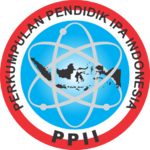Thinking Disposition Profile of Class XI IPA Students in a Palembang School
Abstract
This study aims to determine to find out how far students' critical thinking skills are. Through the description above, the researcher plans to determine the critical disposition ability profile of students in one of the schools in Palembang. This research was conducted in one of the schools in Palembang. The total sample is 70 people. The instruments used in this research are Critical Thinking Disposition Test and Critical Thinking Ability test. Data analysis using SPSS version 22 software application. The critical thinking ability of high school students in biology learning is still low, because the average value obtained is still less than the KKM. Meanwhile, the students' critical disposition ability is thickly proportional, because the average value obtained is in the good category. Based on these results, it was found that there was no relationship between critical thinking skills and critical disposition because there was no association between the two.
Downloads
References
Alghadari, F. (2016). Pembelajaran Berbasis Masalah Untuk Meningkatkan Kemampuan Dan Disposisi Berpikir Kritis Matematik Siswa Sma. Jurnal Penelitian Pendidikan UPI, 13(2), 139064.
Arum, D. R., & S.Minangwati. (2014). Penerapan Metode Pembelajaran Studi Kasus Berbantuan Modul Untuk Meningkatkan Keterampilan Berpikir Kritis. Chemistry in Education, 3(2).
EL-Shaer, A., & Gaber, H. (2014). Impact of problem-based learning on student critical thinking dispositions, knowledge acquisition and retention. Journal of Education and Practice, 5(14), 74–85. http://www.iiste.org/Journals/index.php/JEP/article/view/12992/13308
Facione, P. A. (2000). The Disposition Toward Critical Thinking: Its Character, Measurement, and Relationship to Critical Thinking Skill. Informal Logic, 20(1). https://doi.org/10.22329/il.v20i1.2254
Kadir. (2015). Statistika Terapan. PT. Raja Grafindo Persada.
Nopriana, T., & Noto, M. S. (2017). Komunikasi Matematis dan Disposisi Berpikir Kritis Mahasiswa Pendidikan Matematika pada Mata Kuliah Matematika Diskrit. TEOREMA : Teori Dan Riset Matematika, 1(2), 45. https://doi.org/10.25157/teorema.v1i2.534
Repo, S., Lehtinen, T., Rusanen, E., & Hyytinen, H. (2017). Prior education of Open University students contributes to their capability in critical thinking. Journal of Adult and Continuing Education, 23(1), 61–77. https://doi.org/10.1177/1477971417693416
Saavedra, A. R., & Opfer, V. D. (2012). Teaching and Learning 21st century Skills: Lessons from the Learning Sciences. APERA Conference, April, 1–35. https://www.aare.edu.au/data/publications/2012/Saavedra12.pdf
Syahfitri, J. (2019). Pengujian Validitas Dan Praktikalitas Tes Disposisi Berpikir Kritis Dalam Biologi (Tdbkb). Jurnal Pendidikan Sains (Jps), 7(1), 30. https://doi.org/10.26714/jps.7.1.2019.30-35
Wayudi1, M., Suwatno, & Santoso, B. (2019). Kajian analisis keterampilan berpikir kritis siswa sekolah menengah atas. Jurnal Pendidikan Manajemen Perkantoran, 4(2), 141. https://doi.org/10.17509/jpm.v4i2.18008
West, R. F., Toplak, M. E., & Stanovich, K. E. (2008). Heuristics and Biases as Measures of Critical Thinking: Associations with Cognitive Ability and Thinking Dispositions. Journal of Educational Psychology, 100(4), 930–941. https://doi.org/10.1037/a0012842
Zakiah, L., & Lestari, I. (2019). Berpikir Kritis Dalam Pembelajaran (Issue August). https://doi.org/10.31219/osf.io/7dakf
Authors who publish with ISEJ: Indonesian Science Education Journal agree to the following terms:
- Authors retain copyright and grant the ISEJ: Indonesian Science Education Journal right of first publication with the work simultaneously licensed under Creative Commons Attribution License (CC BY 4.0) that allows others to share the work with an acknowledgment of the work's authorship and initial publication in this journal.
- Authors can enter into separate, additional contractual arrangements for the non-exclusive distribution of the published version of the work (e.g., post it to an institutional repository or edit it in a book), with an acknowledgment of its initial publication in this journal.
- Authors are permitted and encouraged to post their work online (e.g., in institutional repositories or on their website) before and during the submission process, as it can lead to productive exchanges, as well as earlier and greater citation of published work.












